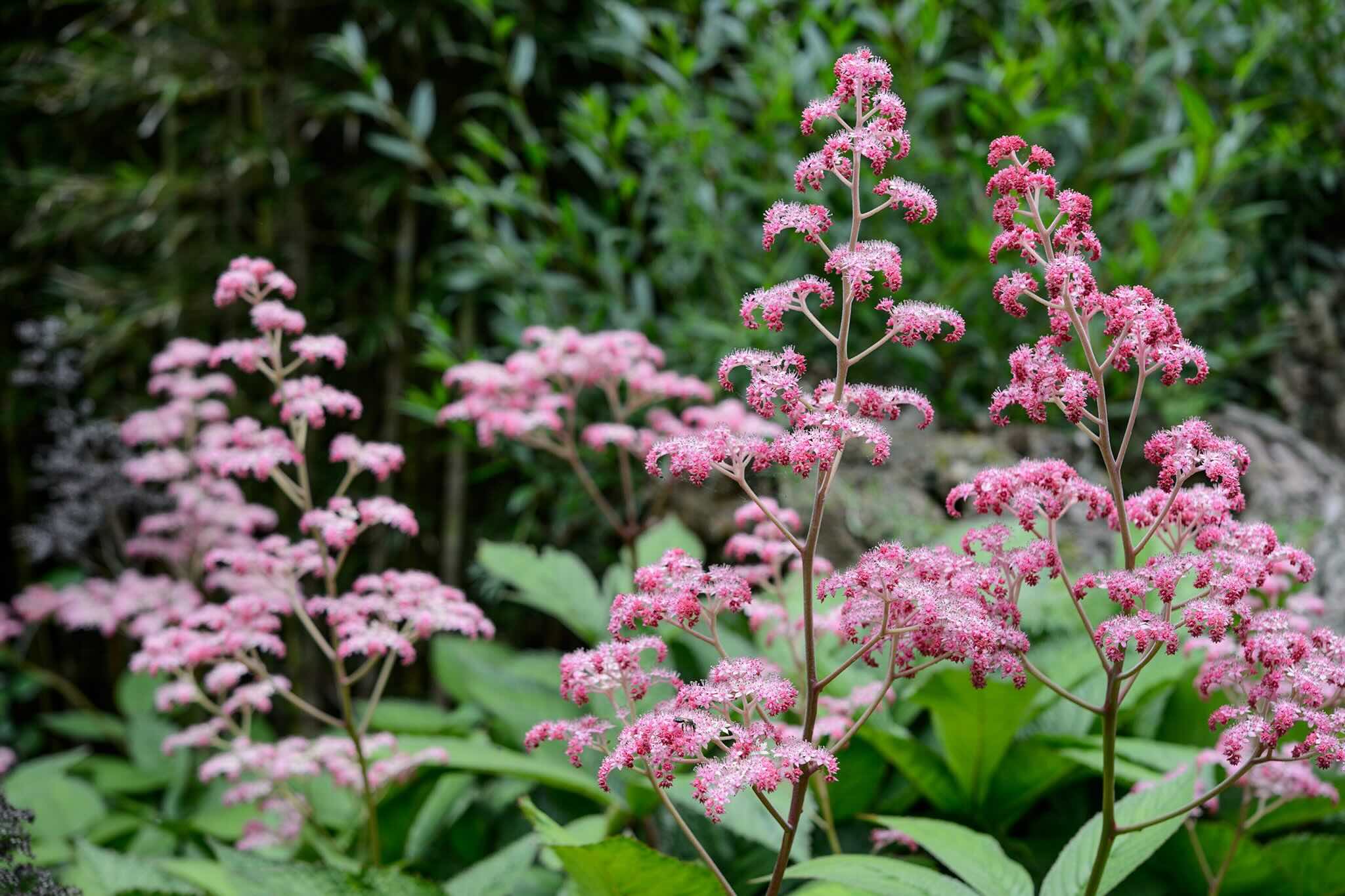
Rodgersia is a stunning perennial plant that can transform any garden into a lush, green paradise. Known for its large, textured leaves and striking flower clusters, this plant is a favorite among gardeners looking to add a touch of drama to their outdoor spaces. But what makes Rodgersia so special? Rodgersia thrives in shady, moist environments, making it perfect for those tricky garden spots where other plants struggle. Its foliage changes color with the seasons, offering year-round interest. Whether you're a seasoned gardener or just starting out, learning about Rodgersia can help you make informed decisions for your garden. Ready to dive into 31 fascinating facts about this unique plant? Let's get started!
What is Rodgersia?
Rodgersia is a genus of flowering plants in the Saxifragaceae family. Known for their large, bold leaves and striking flower clusters, these plants are often used in gardens for their dramatic foliage and flowers.
- Rodgersia plants are native to East Asia, particularly China and Japan.
- The genus was named after Admiral John Rodgers, a 19th-century American naval officer.
- These plants thrive in moist, woodland environments.
- Rodgersia can grow up to 6 feet tall, making them a standout in any garden.
- They are known for their large, palmate leaves, which can be up to 2 feet across.
Types of Rodgersia
There are several species within the Rodgersia genus, each with unique characteristics. Here are some of the most notable ones.
- Rodgersia aesculifolia, also known as the "Horse-Chestnut Rodgersia," has leaves resembling those of a horse chestnut tree.
- Rodgersia pinnata features feathery, divided leaves and is often used in ornamental gardening.
- Rodgersia podophylla has distinctive, deeply lobed leaves and is native to Japan and Korea.
- Rodgersia sambucifolia, or "Elderberry Rodgersia," has leaves similar to those of elderberry plants.
- Rodgersia henrici is a rare species with unique, deeply cut leaves.
Growing Conditions
Rodgersia plants have specific growing requirements to thrive. Understanding these conditions can help gardeners cultivate healthy, vibrant plants.
- Rodgersia prefers partial to full shade, making them ideal for woodland gardens.
- They require consistently moist soil, as they do not tolerate drought well.
- These plants thrive in rich, organic soil with good drainage.
- Rodgersia benefits from a thick layer of mulch to retain soil moisture.
- They are hardy in USDA zones 5-8, meaning they can withstand cold winters.
Flowering and Foliage
The flowers and foliage of Rodgersia are what make these plants so appealing to gardeners. Let's explore their unique characteristics.
- Rodgersia produces large, plume-like flower clusters in shades of white, pink, or red.
- The flowers bloom in late spring to early summer, adding a burst of color to the garden.
- The leaves of Rodgersia can change color in the fall, often turning shades of bronze or red.
- The foliage is typically coarse and textured, adding visual interest even when the plant is not in bloom.
- Rodgersia leaves can create a lush, tropical look in temperate gardens.
Pests and Diseases
Like all plants, Rodgersia can be susceptible to certain pests and diseases. Knowing what to look out for can help keep these plants healthy.
- Slugs and snails are common pests that can damage Rodgersia leaves.
- Powdery mildew is a fungal disease that can affect Rodgersia, causing a white, powdery coating on the leaves.
- Root rot can occur if the soil is too wet and poorly drained.
- Aphids may occasionally infest Rodgersia, feeding on the plant's sap.
- Regular monitoring and proper care can help prevent most pest and disease issues.
Uses in Landscaping
Rodgersia is not just a pretty face; these plants have practical uses in landscaping as well.
- Rodgersia is often used as a focal point in shade gardens due to its dramatic foliage.
- These plants can be used to create a lush, tropical look in temperate climates.
- Rodgersia is excellent for planting near water features, as they thrive in moist conditions.
- They can be used as a backdrop for smaller plants, providing height and texture.
- Rodgersia is also effective for erosion control on slopes due to its extensive root system.
Fun Facts
Let's wrap up with some fun and lesser-known facts about Rodgersia.
- Rodgersia is sometimes called "Rodger's Flower" in honor of Admiral John Rodgers.
Final Thoughts on Rodgersia
Rodgersia is more than just a pretty plant. It's a hardy perennial that can transform any garden with its lush foliage and striking flowers. Whether you're a seasoned gardener or just starting out, this plant is a fantastic addition to your landscape. Its ability to thrive in shady areas makes it versatile, and its low-maintenance nature means you won't have to spend all your time tending to it. Plus, with its variety of species, you can find one that fits perfectly with your garden's aesthetic. So, if you're looking to add some texture and color to your garden, consider giving Rodgersia a spot. You'll be rewarded with a plant that's not only beautiful but also resilient and easy to care for. Happy gardening!
Was this page helpful?
Our commitment to delivering trustworthy and engaging content is at the heart of what we do. Each fact on our site is contributed by real users like you, bringing a wealth of diverse insights and information. To ensure the highest standards of accuracy and reliability, our dedicated editors meticulously review each submission. This process guarantees that the facts we share are not only fascinating but also credible. Trust in our commitment to quality and authenticity as you explore and learn with us.
